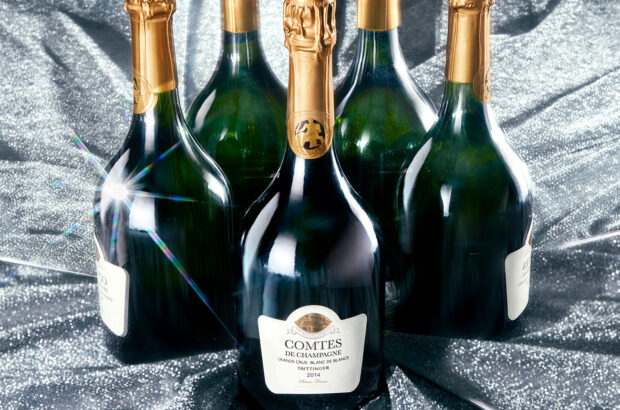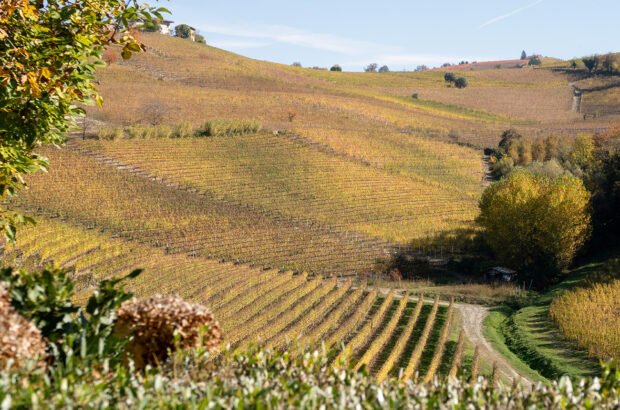When it comes to exploring the different factors that can influence the flavours of a fermented or distilled drink, producers often wax lyrical about the growing or sourcing of raw materials, fermentation times and yeasts used, the size and shape of their stills, and the casks that they use.
Extraction of the sugars – be it through milling and then soaking, pressing or otherwise – is often glossed over. In talking about tequila production, however, more time is often spent on this part of the process – and little wonder, given the impact it has on the final flavour of the product.
This is a story about traditional production methods being usurped by modern, mechanised technology, before those methods then started to claw their way back into use.
It’s about slow, inefficient production methods and the deep, rich flavours of the agave plant that they impart to the tequila.
And it all focuses on a huge two-ton volcanic rock wheel called a tahona.
Perhaps the most romantic symbol of tequila production, aside from the agave plant itself, the tahona crushes the agave from which tequila is made. While the development of the mechanised roller mill has pushed this method out in recent years, a small but growing band of producers is reintroducing it. Sitting in a circular pit, the stone trundles slowly around, usually propelled by a tractor.
‘I believe that the Spaniards brought the tahona wheel over. To my knowledge there is no archaeological record that shows the native peoples of Mexico had it before,’ says Guillermo Sauza, founder of Tequila Fortaleza, a brand that employs the same traditional tequila production methods that were in use in the 1960s, and uses only a tahona for milling. There were limitations to its use, however, as Sauza explains: ‘A small distillery was limited by what the tahona can crush in a day. It is very tedious and time-consuming work.’

Guillermo Sauza, founder of Tequila Fortaleza
Rolling over
At the turn of the 20th century, the roller mill was adopted by the tequila industry from sugar cane production. A very large piece of equipment, the roller mill essentially chops and presses the agave, and has a conveyor belt along which the plant’s fibres travel. These are rinsed with water to remove the sugars, with the process happening five times to remove as much sugar as possible.
‘The roller mill allowed production to grow exponentially,’ explains Sauza. ‘After the invention of the roller mill, a distillery could crush 15 tons [of agave] an hour, as opposed to three tons in six hours.’
The tahona’s difficulties don’t stop there. While the resulting sugary liquid from a roller mill is able to be fermented and then distilled with relative ease, the tahona’s crushed material is particularly difficult to work with.
‘The tahona separates the fibres and juices of the agave and macerates it into a fibrous paste,’ explains Olmeca maestro tequilero Jesús Hernandez. ‘And then everything that has been crushed – all the fibres, solids and juice – is included in fermentation. And once the fermentation is done, again, all the solids and liquids are included in the first distillation. It’s complicated and labour intensive. So that’s why we have a lot of flavours and aromas of agave [in tahona-milled tequila]. It’s because all the fibres are included in it.’
There is one tequilero who has tried to take the tahona method and make it more efficient. At Destilería El Pandillo in Mexico’s highlands, Felipe Camarena is in proud possession of ‘Felipestein’, a repurposed and modified steamroller that is now covered in studs.
‘We wanted a more efficient alternative given that the traditional tahona wheel stone has a very reduced surface area, and it usually takes an entire work shift to process a load of fibre,’ explains Camarena. ‘We wanted to stick as close as possible to the artisanal process by avoiding overly industrial methods, and ended up with “Felipestein” as a prototype that stood the test of time.’ While it may not be as attractive, it could be the solution to some of the roadblocks standing in the way of the tahona being more widely reintroduced.

Olmeca maestro tequilero Jesús Hernandez
A matter of taste
So what does using the tahona mill bring to the flavour profile of tequila in comparison to the roller mill? On a visit to Patrón’s distillery, sitting in a tasting room, I compared the difference between roller mill tequila and tahona tequila, with both at 55% abv. The roller mill spirit was bright and fresh, boasting notes of citrus, green apples, vanilla, black pepper and grapefruit bitterness with a smooth mouthfeel.
The tahona liquid, on the other hand, was richer, sweeter, more velvety, with clear agave, caramel and terracotta pot flavours. They were like two sides of the agave coin.
While a couple of brands make 100% tahona-milled tequila, such as Tequila Fortaleza, as well as Patrón with its premium Roca range, the majority of distilleries that use the wheel create a blend that incorporates both tahona and roller-mill liquid. Siete Leguas is one such brand.
Volcan de mi Tierra is a relatively new brand, created by the Gallardo family in partnership with Moët Hennessy. Its tequilas are made from a blend, with the roller mill making up the lion’s share. ‘We were looking to add just enough 100% tahona to our blend to enhance texture and minerality,’ explains Volcan COO Santiago Cortina Gallardo.
Hernandez has also taken this approach with his Olmeca Altos range. ‘The objective with Olmeca Altos was to have a tequila that had a lot of aromas and flavours, so that it would be easy to sip slowly, but we also wanted it to be a good tequila for making cocktails. So it had to have intensity, in order not to get lost in the cocktail. The idea was to use these two different styles of production to complement each other.’
With its small but growing band of evangelical supporters, the tahona is slowly rolling back the years and into production again. And tequila’s flavour profile is all the richer for it.
Eight tequilas to try
Tahona tequilas
G4 Blanco
Made by Felipe Camarena using his take on a tahona – a modified steamroller complete with studs – this expressive, floral, earthy tequila smells like Mexico in a glass. The oily, viscous palate boasts incredible minerality, with plenty of chalk and pebbles, cream, agave and spicy white pepper.
Alc 40% ABV
Roca Patrón Silver
Patrón’s main line of expressions may include tequilas made with a blend of both tahona and roller mill, but its Roca range is made exclusively using tahona. The result is soft and approachable, with rich agave, earthy terracotta, mint, cinnamon and a warming heat.
Alc 45% ABV
San Matias Tahona Blanco
Made in order to celebrate San Matias’ 130th anniversary, this shows initial sweet, earthy flavours that are overridden by a generous lick of sea salt. Juicy lime, aromatic jasmine and Victoria sponge cake notes mix with a sprinkling of baking soda on a viscous mouthfeel.
Alc 38%
Tequila Fortaleza Still Strength Blanco
Made at the magical Fortaleza distillery, which uses the same equipment (save a few crucial replacements) that was in it when the Sauza family took it over. Preserved lemons, shiso leaves and Brazil nuts; bright, sappy palate with marshmallow sweetness and earthy sesame-seed brittle.
Alc 46%
Roller mill
El Tequileño Blanco
The agave may be sourced from the highlands (Los Altos) of Jalisco, but this brand’s distillery is located in the valley, in Tequila town. You’ll find a nose of tree sap, lime zest, raspberry and desiccated coconut, all also found on the palate, alongside marmalade and banana chips.
Alc 38%
Vivir Blanco
Contract-distilled at the Casa Maestri distillery, Vivir’s products are all made using roller mill. A nose of crystallised stem ginger, lemon and lime and syrup sponge lead to an agave-forward palate with fresh mint, angel cake and liquorice root.
Alc 40%
Roller mill and tahona mixed
Olmeca Altos Plata
Developed in partnership with two leading bartenders by maestro tequilero Jesús Hernandez, who keeps the proportion of tahona liquid used in the blend a secret. Has a chalky palate with pretty white flowers, grass, agave, lemons, black pepper and a smattering of cocoa powder.
Alc 38%
Volcan de mi Tierra Blanco
A new tequila to the market, Volcan incorporates agave from both the highlands and valley of Jalisco, each being separately distilled. Of the lowland tequila, 10% is crushed with the tahona. Velvety soft, this is easy drinking, with sweet agave flavours, menthol and eucalyptus.
Alc 40%











